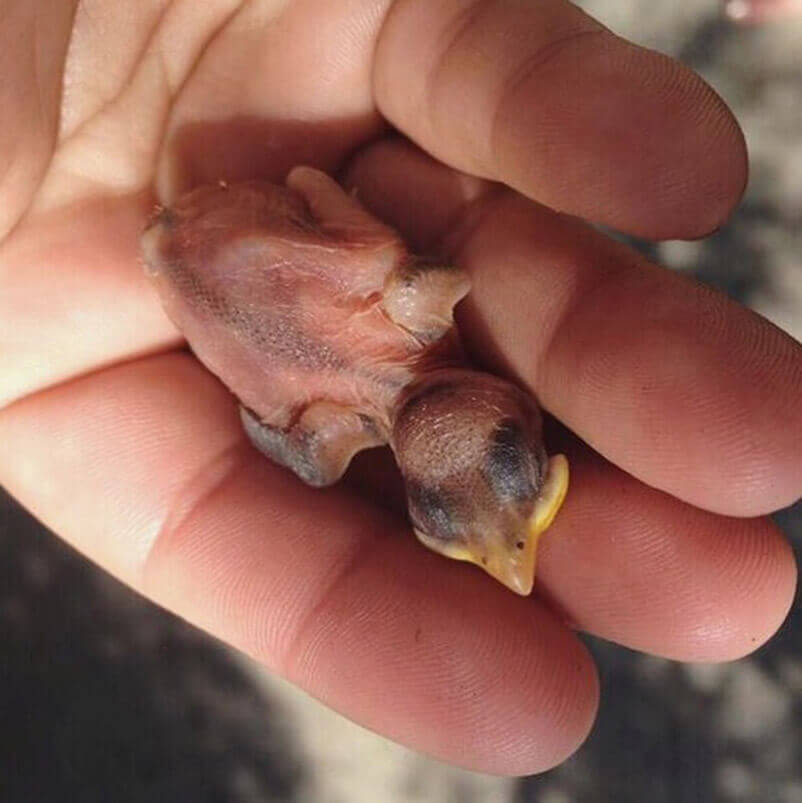
Caring for a Baby Bird: A Comprehensive Guide
Introduction
Baby birds, with their delicate bodies and vulnerable nature, require specialized care to thrive. Whether you’ve stumbled upon an abandoned nestling or rescued an injured fledgling, providing appropriate nourishment and shelter is crucial for their survival. This comprehensive guide will equip you with the knowledge and techniques necessary to care for a baby bird effectively.
Assessment and Identification
Before administering care, it’s essential to assess the bird’s condition and identify its species.
- Age: Determine if the bird is a nestling (eyes closed, flightless) or a fledgling (eyes open, some flight ability).
- Species: Observe the bird’s physical characteristics, such as size, beak shape, and plumage, to identify its species. This will help you determine its specific dietary and care requirements.
Feeding
Baby birds have high metabolic rates and require frequent feedings. The type of food they need depends on their species and age.
- Nestlings: Feed nestlings every 15-30 minutes during daylight hours. Use a syringe or dropper to administer a specialized formula designed for baby birds.
- Fledglings: Offer fledglings a variety of soft foods, such as insects, worms, and fruit. Gradually transition them to a diet of seeds and pellets as they mature.
Hydration
Baby birds can easily become dehydrated. Provide fresh water at all times, either in a shallow dish or by gently dripping it into their mouths.
Shelter
Create a warm and secure shelter for the bird.
- Nest: For nestlings, provide a small, enclosed nest lined with soft materials.
- Box: For fledglings, use a cardboard box with air holes and a soft lining.
Temperature
Baby birds are sensitive to temperature fluctuations. Maintain a constant temperature of 85-95°F (29-35°C) for nestlings and 75-85°F (24-29°C) for fledglings. Use a heating pad or heat lamp to provide warmth, but avoid direct contact with the bird.
Hygiene
Keep the bird’s environment clean to prevent infection.
- Nest: Change the nest lining daily.
- Box: Clean the box regularly with warm, soapy water.
- Bathing: Nestlings can be gently bathed in warm water. Fledglings may bathe themselves.
Health Monitoring
Monitor the bird’s health closely for any signs of illness or distress.
- Appearance: Observe the bird’s eyes, beak, and feathers for any abnormalities.
- Behavior: Note any changes in activity level, appetite, or vocalizations.
- Droppings: Check the bird’s droppings for consistency and color.
Rehabilitation and Release
Once the bird is healthy and strong enough, it’s time to prepare it for release.
- Flight Training: Gradually introduce the bird to flight by placing it in a larger enclosure with perches.
- Hunting Practice: For insectivorous birds, provide live insects to encourage hunting behavior.
- Release: Choose a suitable release site with abundant food and shelter. Monitor the bird after release to ensure its successful adaptation.
Special Considerations
- Orphaned Nestlings: Nestlings that have lost their parents require immediate care. Contact a wildlife rehabilitator or veterinarian for assistance.
- Injured Birds: Injured birds may require medical attention. Contact a veterinarian or wildlife rehabilitator for proper treatment.
- Legal Considerations: In many areas, it’s illegal to keep wild birds as pets. Check local regulations before caring for a baby bird.
Conclusion
Caring for a baby bird is a rewarding but challenging endeavor. By following these guidelines, you can provide the necessary nourishment, shelter, and care to ensure the bird’s survival and successful return to the wild. Remember to prioritize the bird’s well-being and seek professional assistance when needed. With patience, dedication, and a deep respect for nature, you can make a significant difference in the life of a vulnerable baby bird.
